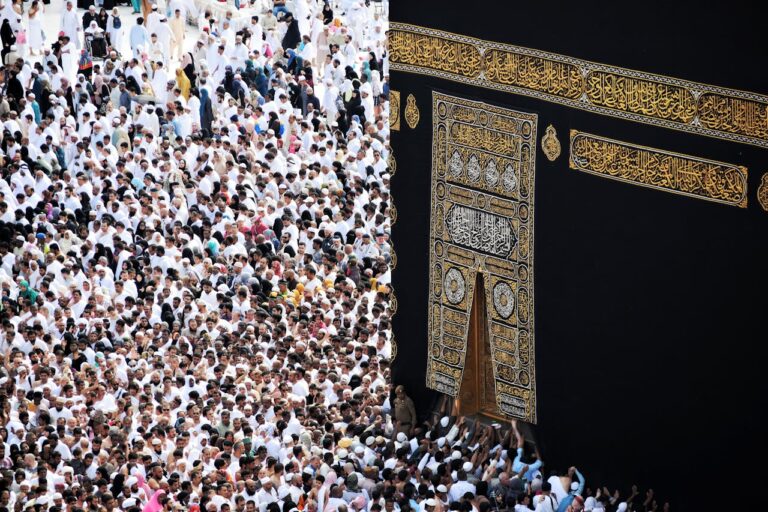Pakistan, a country deeply rooted in Islamic traditions, is home to some of the most beautiful and historically significant mosques in the world. These mosques are not merely places of worship; they are also cultural landmarks, architectural marvels, and reflections of the country’s Islamic heritage. From the Mughal-era masterpieces to contemporary structures, Pakistan’s mosques attract worshippers, historians, architects, and tourists alike.
In this article, we explore the Top 10 Mosques in Pakistan, delving into their history, design, spiritual significance, and cultural impact.
1. Faisal Mosque, Islamabad
The Faisal Mosque in Islamabad stands as the national mosque of Pakistan and a symbol of modern Islamic architecture. Commissioned by King Faisal bin Abdulaziz of Saudi Arabia and designed by the Turkish architect Vedat Dalokay, the mosque was completed in 1986.
Unlike traditional domed mosques, Faisal Mosque has a striking contemporary design resembling a Bedouin tent, with sharp lines and four towering minarets. Set against the backdrop of the Margalla Hills, it is not only a place of worship but also a major tourist attraction.
The mosque can accommodate over 100,000 worshippers, making it one of the largest in the world. Its minimalistic design, vast courtyard, and serene environment make it an ideal location for prayer and reflection. For many, the Faisal Mosque represents Pakistan’s aspiration to blend modernity with Islamic tradition.
2. Badshahi Mosque, Lahore
Built in 1673 by the Mughal Emperor Aurangzeb, the Badshahi Mosque is one of the most iconic landmarks of Lahore. It is the second largest mosque in Pakistan and one of the largest in South Asia.
The mosque exemplifies the grandeur of Mughal architecture with its vast red sandstone walls, marble inlay work, and majestic domes. Its courtyard can accommodate nearly 100,000 worshippers, reflecting the scale of Mughal imperial ambitions.
The Badshahi Mosque has also been a witness to history. It served as a military garrison during the Sikh and British rule before being restored to its original glory. Today, it stands as a proud reminder of Lahore’s cultural and religious heritage, drawing millions of visitors each year.
3. Shah Jahan Mosque, Thatta
Located in the historic city of Thatta, Sindh, the Shah Jahan Mosque is a 17th-century masterpiece gifted by Emperor Shah Jahan to the people of Sindh in 1647.
What makes this mosque unique is its extensive use of blue tiles, intricate geometric patterns, and flawless acoustics. The prayer hall, with its 93 domes, creates a sound system where a person speaking at one end can be heard clearly at the other without amplification.
Unlike many Mughal mosques, the Shah Jahan Mosque has no minarets, making its design distinctive. It is a UNESCO World Heritage Site and a stunning example of tile work and Islamic artistry in South Asia.
4. Mahabat Khan Mosque, Peshawar
Built in 1630 during the reign of Mughal Emperor Shah Jahan, the Mahabat Khan Mosque is the most famous mosque in Peshawar. Named after the Mughal governor of Peshawar, Nawab Mahabat Khan, the mosque is located in the city’s old bazaar area.
The mosque is renowned for its white marble façade, towering minarets, and interior frescoes depicting floral and geometric designs. It has withstood invasions, Sikh rule, and British occupation, yet remains a vibrant place of worship.
Its central courtyard can hold thousands of worshippers, and during Ramadan and Eid, it becomes the heart of religious gatherings in Peshawar.
5. Moti Masjid, Lahore Fort
Nestled inside the Lahore Fort, the Moti Masjid (Pearl Mosque) is a small yet elegant structure built by Emperor Shah Jahan in the mid-17th century. Constructed with white marble, it earned its name due to its glowing pearl-like appearance.
Although smaller compared to grand mosques like Badshahi, the Moti Masjid is celebrated for its simplicity, purity, and Mughal aesthetics. The mosque was used as a private place of worship for the royal family.
The mosque’s architectural finesse lies in its three domes, arched entrance, and polished marble floors. Today, it stands as a serene monument within the historic Lahore Fort complex, visited by tourists and history enthusiasts.
6. Tooba Mosque (Gol Masjid), Karachi
The Tooba Mosque, popularly known as Gol Masjid, is located in Karachi and is one of the largest single-dome mosques in the world. Completed in 1969, the mosque was designed by Pakistani architect Dr. Babar Hamid Chauhan and engineer Zaheer Haider Naqvi.
Its main feature is the enormous white marble dome, measuring 72 meters in diameter, supported without any central pillars. This creates a vast uninterrupted prayer space for more than 5,000 worshippers.
The mosque’s sleek, modern design and spiritual atmosphere make it one of Karachi’s most cherished religious landmarks.
7. Bhong Mosque, Rahim Yar Khan
The Bhong Mosque in southern Punjab is a relatively modern structure, completed in the late 20th century by the wealthy philanthropist Sardar Rais Ghazi Muhammad. Despite its modernity, the mosque has won international acclaim, including the Aga Khan Award for Architecture in 1986.
What sets the Bhong Mosque apart is its fusion of traditional Islamic motifs with modern artistry. The mosque features intricate calligraphy, mirror work, vibrant tile mosaics, and elaborate marble carvings.
It represents a blend of cultural and artistic traditions from across Pakistan, making it not just a place of prayer but also a living gallery of Islamic art.
8. Masjid-e-Tuba, Multan (Not to be confused with Karachi’s Gol Masjid)
Multan, the “City of Saints,” is filled with shrines and mosques, but Masjid-e-Tuba is particularly famous for its unique architectural design. Built in the 1960s, the mosque features a large central dome with minimalistic support, similar to Karachi’s Tooba Mosque.
The mosque reflects the city’s historic association with Islamic scholarship and Sufism. Its clean lines, spacious interior, and serene environment make it a favorite among worshippers and visitors alike.
9. Shahi Eid Gah Mosque, Multan
Another gem of Multan, the Shahi Eid Gah Mosque, was constructed in 1735 by Nawab Shuja-ud-Daula during the Mughal era. It is one of the largest mosques in Multan, designed to accommodate massive gatherings during Eid prayers.
The mosque’s façade is adorned with blue glazed tiles and intricate floral patterns, a hallmark of Multani craftsmanship. Its vast courtyard, arched halls, and historical importance make it a must-visit.
The Shahi Eid Gah Mosque has survived various conflicts, including Sikh invasions and British occupation, but still retains its grandeur.
10. Jamia Mosque, Quetta
The Jamia Mosque in Quetta is one of the most prominent mosques in Balochistan. Known for its large capacity and distinctive architectural style, it serves as a central place of worship for the city’s Muslim population.
The mosque’s design reflects a combination of traditional Islamic and local Baloch influences, with intricate woodwork, decorative tile patterns, and a commanding presence in the cityscape.
During Fridays and Islamic festivals, thousands gather here, making it a spiritual and cultural hub for Quetta.
Conclusion
Pakistan’s mosques are more than just architectural wonders; they are living embodiments of history, culture, and faith. From the Mughal splendor of Badshahi Mosque and Shah Jahan Mosque to the modern elegance of Faisal and Tooba Mosques, each carries a unique story.
These mosques not only provide spiritual solace to millions but also stand as timeless testaments to the creativity and devotion of generations. Whether you are an admirer of Islamic architecture, a history enthusiast, or a traveler seeking cultural experiences, Pakistan’s mosques offer a journey unlike any other.
In celebrating these top 10 mosques, one realizes that Pakistan’s Islamic identity is not confined to rituals but is etched in stone, marble, and tile—a legacy passed down through centuries.




